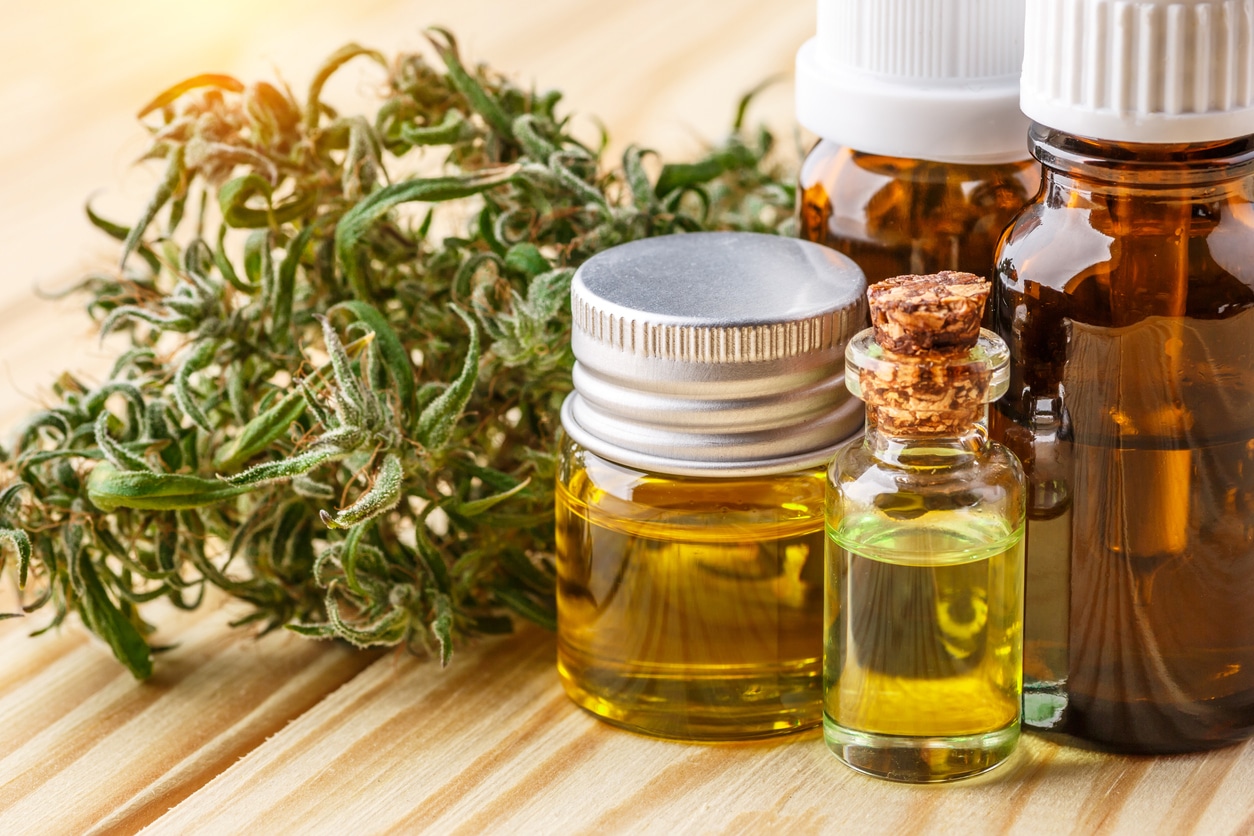When most people think about marijuana products, they only consider the two best-known by-products: THC and CBD. However, these two chemicals are just some of the 100+ cannabinoids from cannabis plants. What’s more, each cannabinoid can offer unique benefits to anyone using marijuana products.
What Are Cannabinoids?
The cannabis plant contains over 550 unique chemical compounds [1]. These compounds fall into several different categories, including aromatic terpenes and cannabinoids.
Cannabinoids are active compounds within cannabis plants that can affect our bodies in many ways. These cannabinoids mimic naturally occurring neurotransmitters called endocannabinoids. When we smoke or ingest cannabis, the receptors within our bodies allow cannabinoids to communicate with our brains. These cannabinoids can affect our mood, behavior, coordination, and more.
How Cannabinoids Interact with our Endocannabinoid System
Our endocannabinoid system is a signaling network within our bodies. It controls many aspects of daily functionality, such as appetite, memory, mood, and sleep. Our body naturally produces endocannabinoids, which make us feel hungry, tired, or relaxed.
Thanks to extensive research, we now know that all cannabinoids within a cannabis plant are so structurally similar to endocannabinoids that ingesting cannabis in any way will trigger a response from the body’s endocannabinoid receptors.
However, like with endocannabinoids, each cannabinoid triggers a different type of response from the body. By understanding how each type of cannabinoid affects the body, cannabis users can choose products that best support their health goals.
Types of Cannabinoids
Although cannabinoids all fall into the same category of chemical compounds, each type of cannabinoid affects your body differently. For example, some cannabinoids interact with the limbic system (the part of your brain responsible for memory and emotions), whereas others may affect the mesolimbic pathway (the portion of your brain that controls pleasure and pain receptors).
When purchasing any cannabis product, it can help to know what each of the different types of cannabinoids in a product does and how they affect your body.
THC
THC’s scientific name is delta-9-tetrahydrocannabinol (or delta-9 for short). Delta-9 is probably one of the most well-known cannabinoids. THC interacts well with our bodies because it most closely mimics the endocannabinoid anandamide. THC is also the cannabinoid responsible for many of marijuana’s most notable effects, including the “euphoric” high many people enjoy. THC users also say it can stimulate appetite, dull pain receptors, and alter memory.
In addition to delta-9, there are several other isomers of this cannabinoid, including delta-8 THC and delta-10. These isomers have slightly different chemical structures but can all have psychoactive effects. Because the quantity of delta-8 and delta-10 in each cannabis plant is relatively small, these are often synthetically produced cannabinoids.
Cannabidiol (CBD)
Cannabidiol, or CBD, is the second most prevalent active ingredient in cannabis. Unlike its cousin THC, CBD is not intoxicating or psychoactive. Proponents of CBD oil and other CBD products claim this cannabinoid alleviates symptoms associated with pain, inflammation, headaches, depression, and anxiety. In fact, The Arthritis Foundation endorses the use of CBD for arthritis pain management and has released official guidelines for CBD use for individuals with the condition [2].
Cannabigerol (CBG)
Cannabigerol, or CBG, is a cannabinoid derived from young cannabis plants, which contain higher amounts of CBG than fully-developed plants. Studies show CBG can reduce inflammation and provide pain relief. CBG also offers anti-anxiety effects. Currently, researchers are testing CBG as a potential treatment for glaucoma and Huntington’s disease [3].
Cannabinol (CBN)
Cannabinol, or CBN, was the first cannabis compound isolated from a cannabis extract in the late 1800s. CBN forms as THC degrades from light, heat, or air exposure. In other words, the highest levels of CBN are found in aged, dry cannabis. CBN has been known to be anti-bacterial, neuroprotectant, and helpful with appetite and sleep.
Tetrahydrocannabivarin (THCV)
Tetrahydrocannabivarin (THCV) is a cannabis compound that follows a similar molecular structure to THC. However, THCV offers unique effects that help it stand out from other cannabinoids like THC or CBD. THCV has been known to help suppress appetite, help with blood sugar regulation, reduce physical anxiety, stimulate bone growth, and even relieve memory loss related to aging [4]. Like delta-9, THCV does have psychoactive properties.
Cannabichromene (CBC)
Discovered in the 1960s, cannabichromene (CBC) is one of the most prominent cannabinoids on the market. This means that CBC works with other cannabinoids like THC, CBD, CBG, and CBN, ultimately boosting their therapeutic effects. This contribution to the entourage effect makes CBC very versatile. CBC could potentially be ten times more potent than CBD for treating stress and anxiety and also has significant anti-inflammatory, pain-reducing, antiviral, and bone-growth-stimulating properties [5].
Considerations When Buying Cannabinoids
With so many cannabinoids and products available, it’s hard for consumers to always know which items will best meet their needs. Anytime you purchase cannabis or cannabinoid products, you should consider these factors: concentrations, purity, and the desired benefits.
Concentration Levels
Most cannabis products contain several cannabinoids as well as terpenes and other chemicals. Before you buy any cannabis product, ask about the concentration levels of cannabinoids. You may find that some products contain large amounts of CBD and smaller amounts of other cannabinoids, whereas others are considered high-THC products with relatively low amounts of other cannabinoids. The exact concentrations and combinations can impact the potency, benefits, and side effects you may experience.
Desired Benefits
Each cannabinoid offers its unique benefits to users. Therefore, you should always consider what help or effects you’d like to experience and select products with the best chances of providing such. For example, those who wish to increase their appetite may want a product with higher THC levels, whereas those who need an appetite suppressant may want products that list THCV as an ingredient.
Visit Mountain Annie’s to Buy Cannabinoid Products
We constantly enhance our product offerings and stock inventory from vetted cannabis producers. Whether you are a veteran shopper or purchasing for the first time, our budtenders will assist you in making informed decisions as you buy cannabis and cannabinoid products.
Find out more about our offerings at one of Mountain Annie’s four locations: Cortez, Durango, Ridgeway, and Silverton. We’re open from 8:00 am-9:00 pm every day of the week, and we’re ready to guide you toward the perfect cannabinoid products.
References
[1] https://pubmed.ncbi.nlm.nih.gov/33332000/
[2] https://www.arthritis.org/about-us/news-and-updates/cbd
[3] https://pubmed.ncbi.nlm.nih.gov/25252936/
[4] https://pubmed.ncbi.nlm.nih.gov/25024327/
[5] https://doi.org/10.1111/j.1476-5381.2010.01063.x


